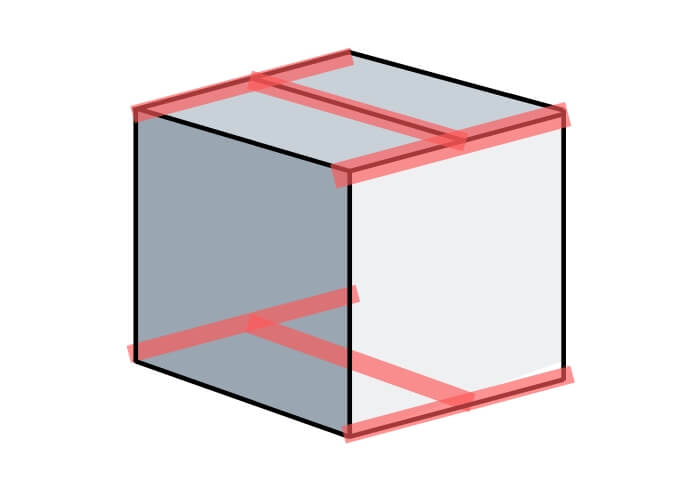Ecommerce International Shipping: How To Start & Scale


Subscribe now! Receive 5% discount.
By signing up for our newsletter and you’ll get 5% off your first order.
You're now subscribed!
In this article:
- International shipping for small and medium businesses
- Preparing your brand for international shipping
- Check customs and international shipping regulations
- Check extra costs for shipping internationally
- Packing your delivery safely
- Finding the right courier
- Consider third-party fulfilment
- Automating your international shipping process
- International shipping, meet ecommerce
- Lowering your international shipping costs
- When something goes wrong…
- Wrapping up
International shipping is often feared by younger ecommerce brands or retail businesses.
If you’re wondering how to ship internationally, it can be a little daunting.
The taxes, regulations and packing required for shipping internationally are overwhelming and straight-up scary.
Well, not when you take a closer look.
Sending a parcel abroad, whether it’s just the one or many, doesn’t have to be a headache. In fact, you’re about to take a deep dive into international shipping.
In this article, you’ll learn:
- How to set up international shipping for ecommerce or small business
- Regulations and costs for international shipping services
- How long does international shipping take?
What you’ll see in this article can help your business expand into different parts of the world. You’ll see how to minimise your risk and costs for shipping abroad, as well as how to make the process as smooth and automated as possible.
Let’s dive in.
International shipping for small and medium businesses
Having a unique product for your online business is the first step in establishing a trustworthy and scalable ecommerce brand.
But your niche may be spread out all over the planet. Only being able to service a small percentage of your niche means that your brand’s lifetime is numbered before it even gets off the ground.
Being able to take your product into all corners of the world is important if you’re to make your brand a household name. Luckily, there are a lot of parcel delivery services that can help take your product into (nearly) every country on the planet - depending on what you’re selling, of course.
If your brand is already established and growing in your domestic market, here’s how to start servicing your international customers.
Preparing your brand for international shipping
Before you launch into international shipping, you need to be absolutely sure that what you’re selling is allowed to be sent where you want it to go.
Check customs and international shipping regulations
Delays and costly fines are some of the things you can look forward to if you’re not familiar with the regulations of the countries you’re sending to.
There are some weird laws out there, some of our favourites being:
- Algeria has a ban on all dental products coming into the country
- You cannot import matching shoes into South Africa, Mexico or India
- In Bulgaria, it’s illegal to import used clothing
The best way to find out what is go/no go is to check the official customs website for your target country. Most countries make what isn’t allowed very clear. Find out more about specific European requirements here
Can I import my product to other countries?
There are two different types of constraints that countries have around imports.
Restricted items are goods which must meet certain criteria before clearing customs and being allowed to enter the country.
Prohibited items are goods which cannot be imported into the country whatsoever.

As you saw earlier, many countries prohibit seemingly harmless goods for no particular reason. But many countries ban the same products out of safety; both during transportation and to the end user.
For example, you’ll find it hard to import fireworks and firearms into most countries.
Is my product made of dangerous parts?
Just because your product isn’t prohibited outrightly, certain parts of it may be prohibited or at least deemed dangerous.
Take, for example, lithium batteries. Individually a battery won’t hurt you, but most are made of flammable materials.
For this reason, international packages (and even domestic packages) that contain lithium batteries must be marked accordingly, so couriers can handle them in the correct way.
Be aware that declaring your product has a dangerous component such as batteries may mean your product cannot travel by air, or incur a dangerous handling fee.
Please note: EU countries are subject to both import laws of the EU and their own national laws. Be sure to check the import regulations of the EU and your target country before sending your package.
Check extra costs for shipping internationally
Taxes, fees, duties, tariffs, there’s a lot of words here that basically mean ‘extra costs’. Let’s break them down a little.
- Taxes are an added expense, usually based on a percentage. An import tax may be applied to your shipments, payable in advance or upon delivery.
- Fees are flat rates that apply to a shipment or transaction, regardless of its value.
- Duties are similar to taxes but are paid to governments, usually as a percentage of your after-tax value.
- Tariffs are a tax that’s added to foreign products to restrict trade from certain countries or to make foreign products less appealing, thus keeping local trade competitive.
If this is your first time shipping internationally, or you rarely do it, the biggest delivery companies (UPS, DHL, FedEx etc) have calculators that help you figure out the ‘landed cost’ of a product. This allows you to price your products and shipping rates accordingly.
Are there any extra costs associated with importing my product to another country?
Many countries have tax free thresholds. This means that a product is free of tax charges if it’s under a certain value.

As you may have guessed, taxes, fees, duties and tariffs vary depending on where you’re shipping from and where you’re shipping to.
Packing your delivery safely
Packing your products correctly is one of the most important things you can do to reduce the risk of extra costs or delays. There are many packaging supplies available to help you do this smoothly, and with a touch of class.
Boxes are the most common way to send parcels, as they’re readily available, highly customizable and are strong for their weight.
Looking to ship a box overseas? Click here to check out Packhelp's range of mailers and shipping boxes.
Here are 5 steps to packaging your boxes for secure international shipping:
1 - Always go with quality
Boxes for shipping can be reused but should be disposed of before they lose their strength and structural integrity. If a flap has been bent or a surface has been dented or pierced, it’s not worth reusing.
If sustainable packaging is important to you, there are many environmentally friendly options on the market.
2 - Avoid empty space
Pick the right sized box. Empty space gives the contents of your box sufficient space to move around in the event of a hard jolt, just as the box being thrown or dropped. This makes the contents more likely to be damaged.
Durable items such as textiles and shoes are usually ok with these kinds of forces and don’t require too much extra protection. For more fragile and delicate items, use a void filler like tissue paper or wood wool.

If your object has a sharp point, extra caution will be needed to make sure it doesn’t pierce the box.
3 - Consider the weight
A mailer box is great for lightweight items, but if the content of your package is heavy (5kg or over) consider using a shipping box, or the ‘box within a box’ method.
For example, product boxes inside a shipping box.

Using a box that isn’t strong enough means your customer will get a damaged box and possibly even a damaged product. Take the time and make sure that your item isn’t too heavy for your box.
Note: Lightweight documents and artwork can be sent securely in a cardboard envelope.
4 - Seal correctly
Sealing a Packhelp mailer box for international shipping has an extra level of security, thanks to the sealing tabs. Once closed, packing tape around two edges as you can see below is more than enough to keep your box sealed.

When sealing a tradition shipping box, or a box with flaps, the best method is to use the ‘H’ method.

Apply packing tape across the longest edge (both top and bottom) and then along the outer sides.
Do not use household tape, string, wrapping paper tape, or marking/painting tape!

